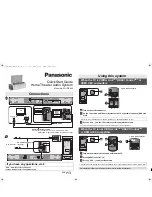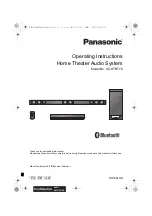
BI-WIRING AND BI-AMPING
We recommend bi-wiring or bi-amping for
improved sound quality.
To bi-wire or bi-amp, remove the metal straps
before going on to the next steps. The top termi-
nal pair on each speaker connects to the high
frequency crossover section and the bottom ter-
minal pair connects directly to the low frequency
crossover section.
To bi-wire (fig. 3), connect cable from one pair of
terminals on each speaker to the amplifiers out-
put terminals. Then, connect another cable from
the second pair of speaker terminals to the SAME
terminals on the amplifier.
To bi-amp (fig. 4), two identical stereo amplifiers
should be used. Connect cable from the bass
terminals of the left speaker to the left channel of
one of the amplifiers. Connect cable from the
bass terminals of the right speaker to the right
channel of the same amplifier.
Connect cable from the high frequency terminals
of the left speaker to the left channel of the second
amplifier. Then, connect cable from the high
frequency terminals of the right speaker to the
right channel of the second amplifier.
Bi-wiring offers improvements in the areas of
openness and reduces intermodulation distort-
ion. Bi-amping offers further improvements in
these areas with the added benefit of increased
dynamics.
Tighten all connections securely so that the cable
cannot slip out. Make certain that no loose
strands of wire are sticking out. Wire connected
to a terminal must never touch wire connected
to any other terminal.
3
Cable quality and design do make a difference. Buy the best cable you can reasonably
afford. In this simple way, you can raise the performance of your system to a higher level.
All manuals and user guides at all-guides.com

























